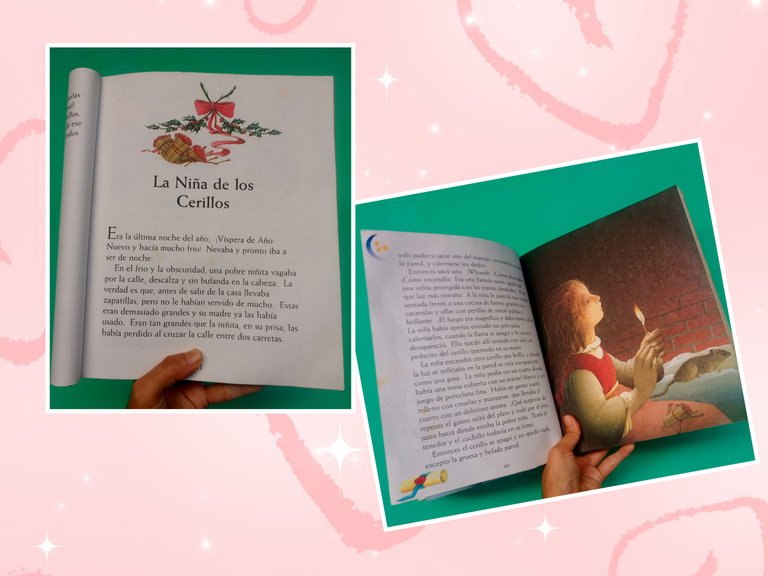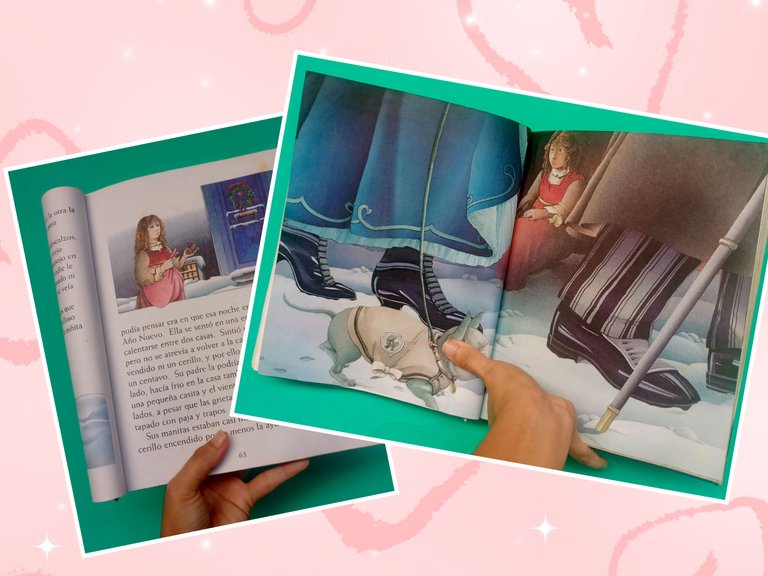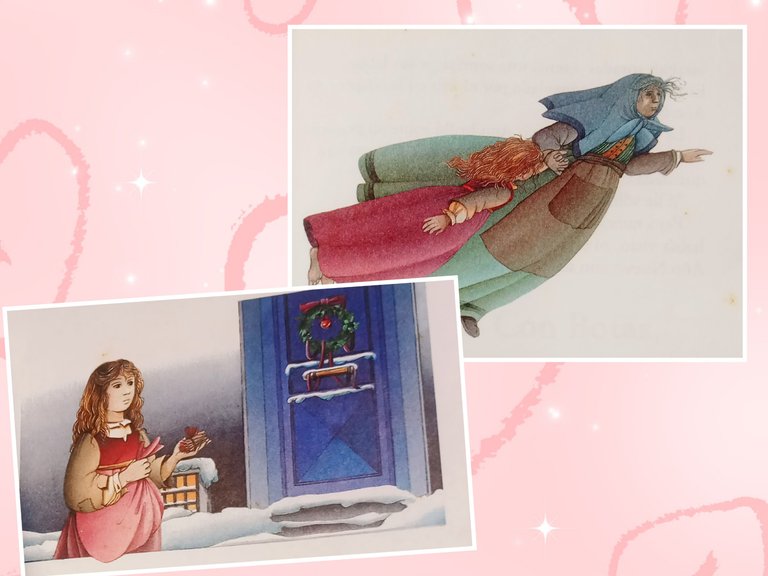Hans Christian Andersen, Danish writer known for his classics in children's literature, left for posterity some stories such as The Little Mermaid and The Ugly Duckling, but also one entitled The match girl, where he uses irony to project a profound social criticism to the public. When I started reading it, I did not imagine I was before a story that presented the reality of some poor and unloved children who survive in the streets.

On New Year's Eve, a little girl wanders around her village, trying to sell a pack of cerrillos to return home with some coins. Fortune was not with her that night, so she was very afraid of returning without money. Here the figure of the father appears as a violent and abusive being.
Her concern led her to sit in an alley between two houses, as she was very cold and hungry. She wanted to light a fire to try to warm herself. As she watched the fire burn, thousands of memories populated her mind, she fantasized about a delicious Christmas meal.

Christian Andersen sets his eyes on a street girl who, although she has a family, is unhappy. No one is able to look after her, she is on the margins of society, she is a silenced voice who suffers and has no options to change her life. The story also alludes to the difference in social classes, because while some families enjoy Christmas amid gifts and lots of food, other people, including children, go hungry and live in great deprivation.
The story has a simple language, easy for children to understand. However, the subject must be treated with great tact, as it can be touching for sensitive minds. Its impact could change the view of Christmas, even create a certain rejection of some family traditions.

By this I do not mean that death and suffering should be censored in children's readings, it should simply be approached from a different perspective, allowing the reading of such stories to children 10 years and older or those who have the capacity to analyze and discern. It is understood that Andersen takes advantage of the oral tradition of his time and that his creations are associated with children, due to their background, but in this case the happy ending that leaves satisfaction at the conclusion of a children's story is not present.
In short, The match girl is a raw story that shows an unpleasant side of reality, the one we sometimes refuse to appreciate. I was moved by this story, hence the cautions and suggestions. Although the story and its plots are designed to make us feel and move us, it would be unwise for the child reader to be saddened and submerged in a world devoid of smiles.

Hans Christian Andersen, escritor danés reconocido por sus clásicos en la literatura infantil, dejó para la posteridad algunos relatos como La Sirenita y El patito feo, pero también uno titulado La Niña de los Cerillos, donde se vale de la ironía para proyectar en el público una profunda crítica social. Cuando inicié su lectura no imaginé estar ante un cuento que presentaba la realidad de algunos niños pobres y carentes de afecto que sobreviven en las calles.

En la Víspera de Ano Nuevo, una niña deambula por su pueblo, tratando de vender un paquete de cerrillos para volver a casa con algunas monedas. La fortuna no la acompañaba esa noche, por ello tenía mucho miedo de regresar sin dinero. Acá aparece la figura del padre como un ser violento y maltratador.
Su preocupación la llevó a quedarse sentada en un callejón entre dos casas, pues tenía mucho frío y hambre. Quiso encender un cerrillo para tratar de calentarse. Mientras veía el fuego arder, miles de recuerdos poblaban su mente, fantasiaba con una deliciosa comida navideña.

Christian Andersen coloca sus ojos en una niña de la calle que, aunque tiene familia, es infeliz. Nadie es capaz de velar por ella, está al margen de la sociedad, es una voz silenciada que sufre y no tiene opciones para cambiar su vida. El relato también alude a la diferencia de clases sociales ya que mientras algunas familias disfrutan de la Navidad en medio de regalos y mucha comida, otras personas, entre ellas niños, padecen hambre y viven en medio de grandes carencias.
El relato posee un lenguaje sencillo, fácil de entender para los niños. Sin embargo, hay que tratar el tema con mucho tacto ya que puede resultar conmovedor para mentes sensibles. Su impacto pudiera cambiar la visión de la Navidad, incluso, crear cierto rechazo ante algunas tradiciones familiares.

Con ello no quiero decir que la muerte y el sufrimiento deban ser censurados en lecturas infantiles, simplemente debería ser abordado desde una óptica distinta, permitir la lectura de tales relatos a niños de 10 años en adelante o que tengan capacidad de analizar y discernir. Se entiende que Andersen se aprovecha de la tradición oral de su tiempo y que se asocian sus creaciones como infantiles, debido a sus antecedentes, pero en este caso no está presente el final feliz que deja satisfacción al concluir un cuento para niños.
En definitiva, La Niña de los Cerillos es una historia cruda que muestra una cara desagradable de la realidad, esa que, a veces, nos negamos a apreciar. A mí me conmovió este relato, de allí las precauciones y sugerencias. Si bien, la historia y sus argumentos están planteados para hacernos sentir y emocionar, no sería prudente que el niño lector se entristezca y se sumerja en un mundo carente de sonrisas.

✓Photos from my personal gallery, edited with Fotocollage.
✓Text translated with DeepL.
💗📚💗📚💗📚💗📚💗
✓Fotos de mi galería personal, editadas con Fotocollage.
✓Texto traducido con DeepL.
Posted Using INLEO